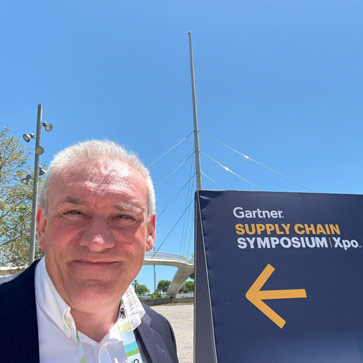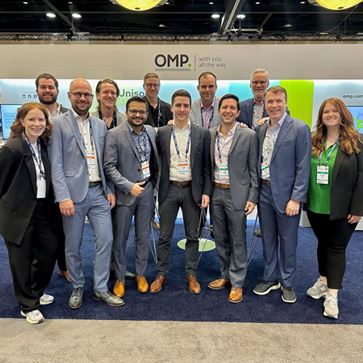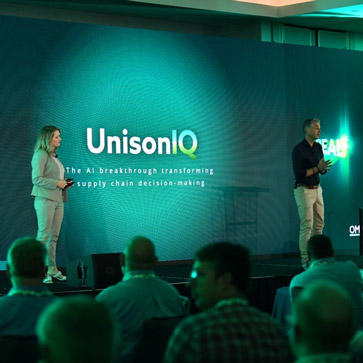
Strategic decision-making leads the conversation at the Gartner Supply Chain Planning Summit
Tim Blake and Peter Reunis - October 24, 2024
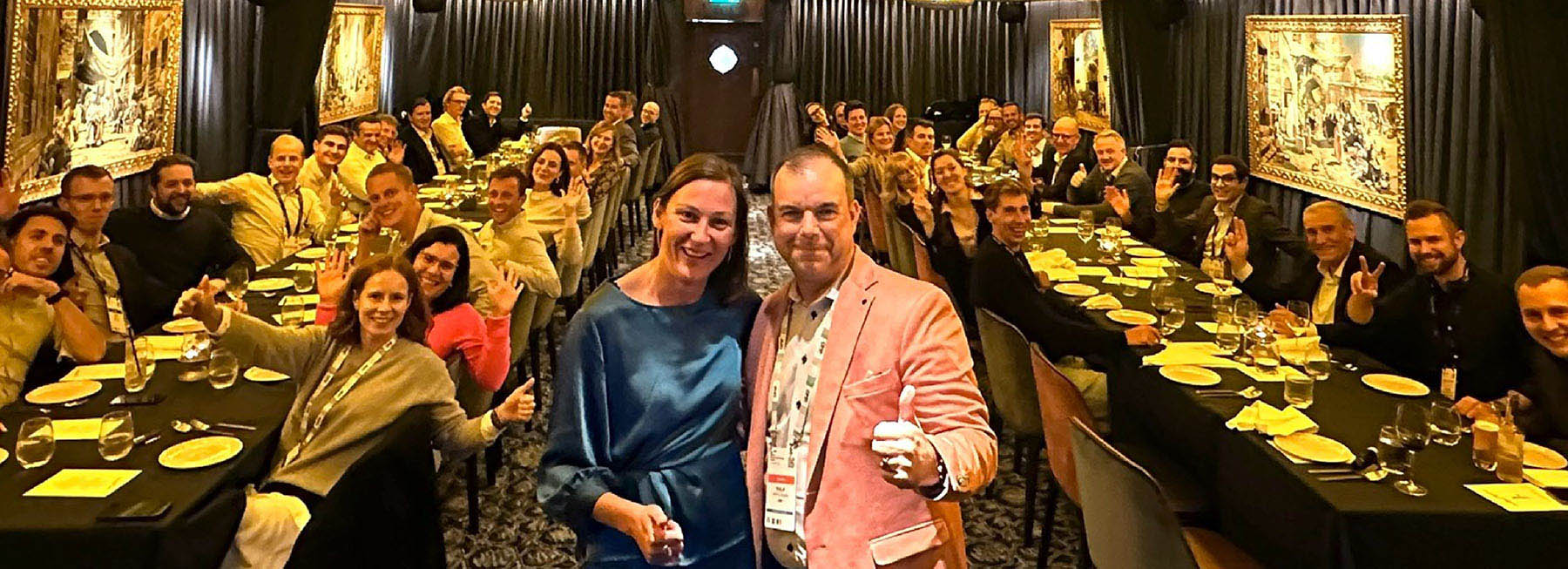
What a great experience it was to be among more than 650 supply chain professionals gathering under the watchful eye of Big Ben for the Gartner Supply Chain Planning Summit last week.
Blog post
Commonly regarded as one of the ‘smaller’ Gartner events, the conference stole our hearts for the depth of vision on display from keynote speakers and for the supportive testimonials from giants like Johnson & Johnson.
And then, we had many warm encounters at the vibrant Park Plaza Westminster Bridge venue on London’s South Bank. That “we” is OMP’s Peter and Tim, and here’s our (inevitably incomplete) recap.
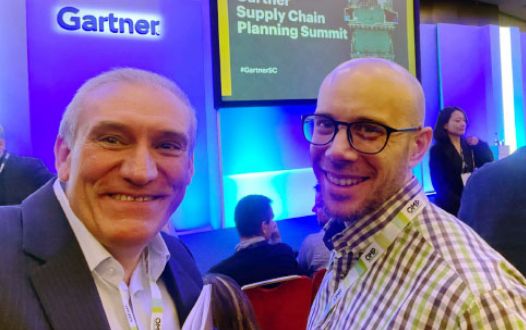
Blog post
Supply chains are hot but need great storytelling
Blog post
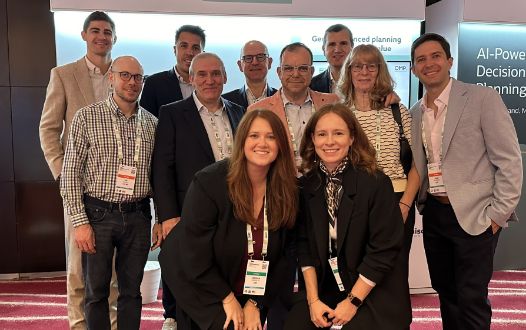
Supply chains are hot. With the growing awareness that better supply chain planning can significantly boost sustainability, profitability, and customer satisfaction, the profession is beginning to swell with pride. Many of those who visited our OMP booth confirmed this. And Gartner keynote speaker Noha Samara gave a nod to this when she recounted her 15-year-old son’s reaction when she explained her supply chain planning expert job: “Oh, so you’re the boss of everything!”
Samara argued that planners should become decision-shapers, because the success of an organization is nothing but the sum of all its decisions, and, in today’s rapidly changing and complex environment, there are more and more decisions to be made. She continued that decision-shapers should turn data into insights and blend quantitative with qualitative metrics using AI and human reasoning to transform insights into intelligence. But, importantly, they should also be storytellers, compiling the knowledge they acquire into a cohesive and engaging story designed to drive action.
Blog post
Her main message: don’t underestimate the storytelling because you need to align the different stakeholders and get things moving forward. She referred to P&G as an example, where this practice has been integrated into the S&OP process with remarkable success.
“Don’t underestimate the storytelling because you need to align the different stakeholders and get things moving forward.”
Overcoming the fear of uncertainty
By the way, Gartner professionals themselves always exhibit great storytelling capabilities, as was further demonstrated by Tessa Mahon, who focused on continuously learning from past decisions in S&OP and S&OE. Planners should evaluate the quality of past decisions rather than their impact — with its tendency to overemphasize negative outcomes, inducing aversion to risk and a fear of making decisions.
Interestingly, Mahon pointed out that General Mills has made significant strides in this area by developing strong decision-making governance and implementing an accelerated integrated planning program across every business function and horizon.
Gartner’s Xiaoshun Sue Grant struck a blow for a range-based planning approach to clearly articulate the uncertainty that must be dealt with. Range-based planning fundamentally alters discussions with stakeholders: instead of seeking approval for a single-number plan, it’s about finding a common ground on ranges, scenarios, assumptions, triggers, and action plans. This approach can remove the fear of uncertainty, allowing greater flexibility and better strategic alignment in the event of disruptions. It’s much like Dwight D. Eisenhower used to say: “In preparing for battle, I have always found that plans are useless, but planning is indispensable.”
“Instead of seeking approval for a single-number plan, it’s about finding a common ground on ranges, scenarios, assumptions, triggers, and action plans.”
Deploying data-driven decision-making capabilities
Supply chain organizations should also move to decision-centric planning, getting away from rigid planning cycles to embrace continuous data-driven monitoring and decision-making. It’s important to look at a sufficiently wide range of data. Gartner’s Caleb Thomson highlighted the importance of incorporating outside-in data, including second- and third-party data to drive insights and improve customer collaboration and supplier visibility.
But then, who will do the planning if it’s becoming so complex? Gartner’s Cristina Carvallo argued that a substantial cultural shift is needed in planning organizations if decision-centric planning and the ‘management of uncertainty’ approach are to be adopted. Decision roles and rights should be clearly defined within the organization, while team members need to take ownership and responsibility for managing uncertainty (because ‘hope is not a strategy’). Assumptions should be challenged, during S&OP meetings, for example.
Driving adoption through impeccable user experience
All of this tends to increase the expectations surrounding planning solutions significantly. It’s no wonder multiple sessions were devoted to the adoption challenge.
“Solutions should offer an impeccable overall user experience for any stakeholder, which is much more than just having a nice user interface.”
GenAI could revolutionize this space by allowing users to express their goals in natural language and validate the resulting AI-generated scenarios. Training programs should center around decision-making, really empowering users, because planning organizations need to be aware that “clients will never be any happier than their own team,” as Paul Redmond rightly pointed out. In view of their digital familiarity and higher UX expectations, this challenge becomes even more pressing with Generation Z entering the arena.
Engaging in GenAI and deep learning
It will not surprise anybody that AI — and Gen AI in particular — was portrayed as the technology game-changer for the years to come, with Gartner’s Joe Graham outlining several use cases for Gen AI in supply chain planning, including:
- Data governance: transactional data, generating of master data, embedding external trading data;
- Demand management: time series analysis, preprocessing forecasting data, outlier management, segmentation;
- Supply planning: heuristics, optimization, pattern recognition.
Major evolutions are expected in multiple areas, but Graham insisted that the right AI techniques be used for the right use cases, taking into account the available data and skills. His advice: always start with a pilot case.
AI is not going to do the trick alone
A further insight came from guest keynote speaker Priya Lakhani when she explained her 3P concept, highlighting three distinct areas where AI will improve planning:
- Productivity, mainly through automation and providing virtual assistance
- Predictions, meaning more accurate forecasting, risk assessments, and more
- Personalization, involving customization and tailoring products to meet the ever-changing customer expectations
“But AI is not going to do the trick alone. Human intelligence brings an essential spark into the game, including creativity, analytical thinking, resilience, flexibility, curiosity, and empathy.”
People make the difference
Blog post
Yes, technology will help us a lot, but in the end, it’s people who make the difference. And that’s exactly what Agatha Blanchard from Johnson & Johnson made clear in her powerful presentation of how her company’s planning department has evolved over the past few years.
To a packed auditorium, she explained how her team has taken the time to thoroughly embed the end-to-end planning approach into the organization, making sure that everyone fully understands the challenge and the way forward. Trust was built up gradually, integrating the more complex solver algorithms only when the time was right. As a result, J&J planners will be fully adopting the Unison PlanningTM MEIO solution by November 2024.
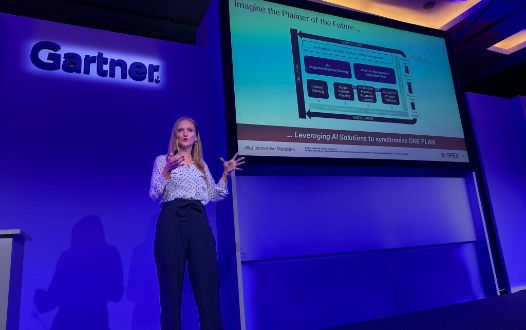
Blog post
“Today, J&J is working fully exception-based, meaning that much of the planning is done autonomously, with planners just checking alerts and adapting parameters accordingly. It’s a great leap forward. And it’s generating real cash!”
Connections and delicacies at the OMP dinner party
Blog post
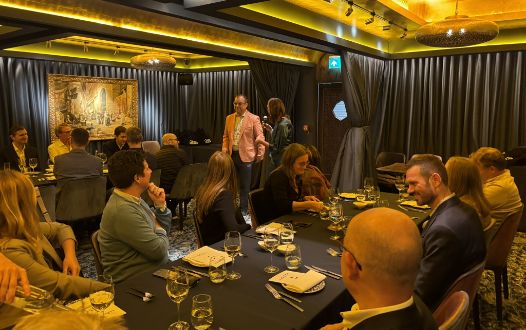
That evening, Agathe Blanchard and her colleagues joined us at the OMP dinner party in the magical atmosphere of Jeru in London’s Mayfair. More than 50 of our customers and prospects enjoyed a splendid evening filled with meaningful connections, conversation, laughter, and Jeru’s signature Mediterranean delicacies. Supply chain planning is serious business, but it’s also a lot of fun with people like this.
Blog post
Get a short recap in our podcast episode with Philip and Flo here. Or do you want to stay tuned to other reports, podcasts, and blogs on this and future Gartner conferences?

Tim Blake
Senior Product Manager at OMP BE
Biography
With over 10 years of experience in supply chain design, optimization, and planning, Tim began his career in the CPG industry before transitioning to advisory and software implementation. He focuses on unlocking value in complex supply chains and has led large, diverse teams. Tim enjoys exploring the intersection of mathematical modeling and real-world business benefits.
Peter Reunis
Senior Strategic Account Manager at OMP BE
Biography
With over 30 years of experience in supply chain planning, Peter specializes in implementing advanced planning solutions and managing strategic programs across various industries. Before joining OMP, he spent more than two decades at SAP in consulting and commercial roles. Passionate about customer success, Peter now oversees key accounts at OMP, helping them achieve planning excellence.